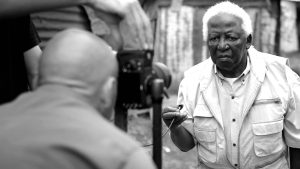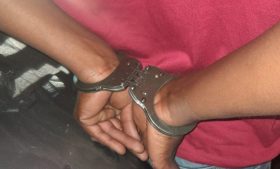Legendary photographer Dr Peter Magubane passes away
SHARE THIS PAGE!

Iconic anti-apartheid photographer Dr. Peter Magubane has passed away at 91, mere days before his 92nd birthday.
Born in 1932, the veteran South African photographer played a crucial role in documenting the apartheid era, using his lens to expose the harsh realities of racial segregation.
His daughter Fikile Magubane told SABCNews that her father passed on at midday on Monday. “My father passed peacefully today, at midday- he was not well, he’s passed on peacefully. My father would have been 92- on the 18th of January. ”
She says his family will remember his passion, “We will remember him as a very hard working, conscientious photographer. He was very passionate about his work, everything else would stop when it comes to his work. We are very pained with the passing of our father.”
His daughter Fikile Magubane speaks to the SABC:
Working primarily for Drum magazine, he documented the daily lives, struggles and resistance of black South Africans. His photographs witnessed pivotal moments and captured the essence of the anti-apartheid movement.
Magubane’s commitment to telling the truth came at a price. He faced persecution, including arrest and 586 days in solitary confinement. Undeterred, he continued to expose injustice, using his camera as both a shield and a sword.
One of his iconic images was taken in 1956 – on a drive through a Johannesburg suburb, Magubane captured a symbol of segregation – a girl on a bench with a sign reading ‘Europeans only’. Despite the risks, he published the photograph worldwide, a stark reminder of apartheid’s grip.
Enduring arrests and abuse, including 586 days in solitary confinement, Magubane remained resolute. Upon release in 1975, he faced a five-year photography ban but defied it during the 1976 Soweto uprising.
Video: Looking back at Peter Magubane’s historic 1976 photos:
Global exposures
The 1980s marked a turning point for his career, opening international opportunities for the seasoned photojournalist. Assigned by the United Nations High Commissioner for Refugees, he ventured into Africa, capturing the complexities of Somalia and Ethiopia.
Simultaneously, Magubane contributed to Time magazine South Africa, showcasing his versatility. However, his dedication to truth encountered danger. In 1985, whilst covering a student’s funeral in Natalspruit, he became a victim of violence, enduring seventeen buckshot wounds below the waist.
In 1990, Magubane assumed a historic role as Nelson Mandela’s official photographer during South Africa’s transition to democracy, documenting a pivotal chapter in the nation’s history.
Books
Dr Magubane launched his photographic book, June 16:
Beyond his photographic exploits, Magubane is a prolific author, penning sixteen books. Some, like “Magubane’s South Africa,” “Black as I Am,” and “Black Child,” faced censorship in 1970s and 80s South Africa, illustrating the impact of his work in challenging the status quo.
His iconic images, often taken at great personal risk, contributed significantly to the international awareness of apartheid’s brutality. Peter Magubane’s legacy stands as a testament to the power of photojournalism in the face of adversity.

DA left unsatisfied after NSFAS engagement
2 hours ago